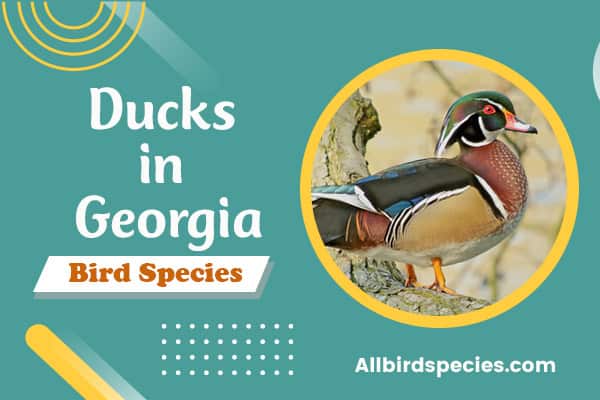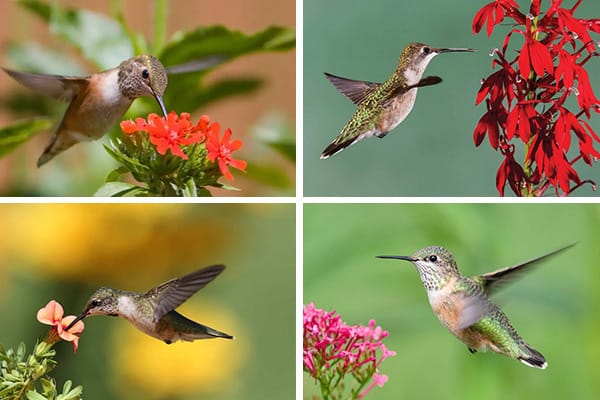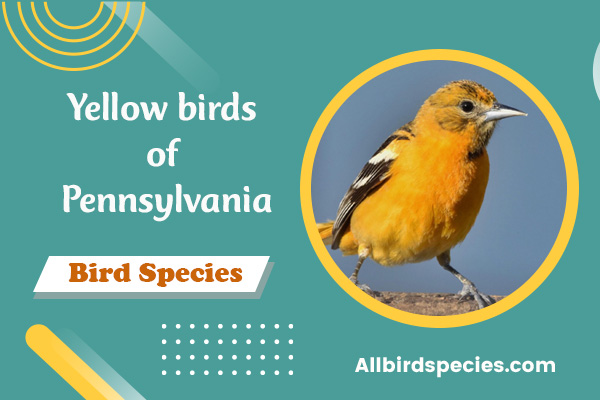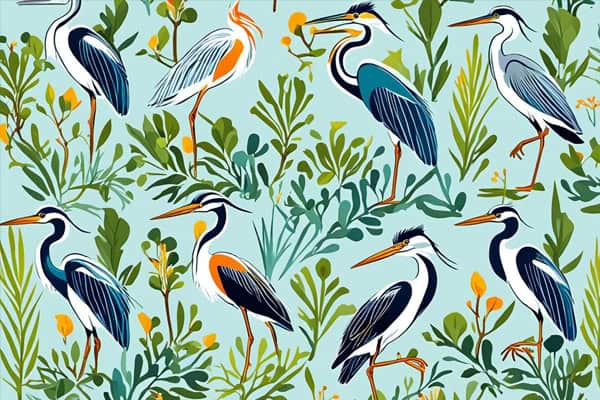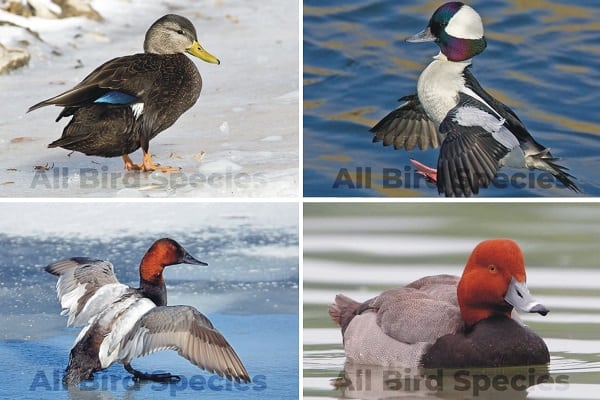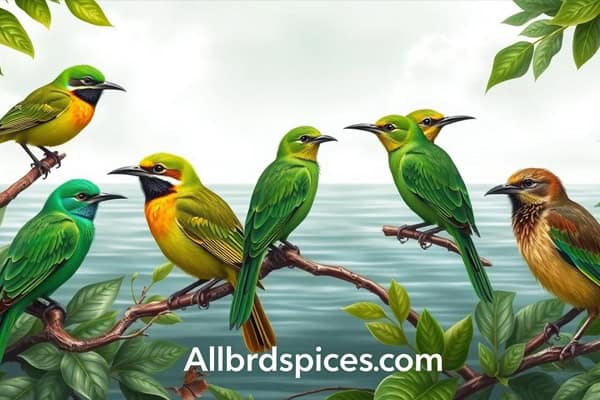16 Types of Ducks Found in Georgia! (ID Guide)
Did you know Georgia has over 24 different types of ducks? This fact shows how diverse our state’s waterfowl life is. Whether you love birdwatching or are just starting, learning about Ducks in Georgia can be exciting.
This guide will explore the many duck species, their homes, behaviors, and when they migrate. We’ll cover from the simple Mallard to the colorful Wood Duck. Our goal is to improve your ability to identify waterfowl and connect you with Georgia’s natural beauty.
Introduction to Ducks in Georgia
Georgia is a paradise for ducks, with its beautiful wetlands, lakes, and rivers. We’ll explore the world of ducks in Georgia, looking at their behaviors and where they live. The state’s wetlands are key to their survival, supporting both local and migrating ducks.
Many ducks come to Georgia, making it a top spot for birdwatching and photography. Seeing these birds up close helps us appreciate Georgia’s nature more. It also lets us connect with the outdoors and enjoy the beauty of ducks.
Understanding Duck Classification
Ducks are divided into three main groups: dabbling ducks, diving ducks, and sea ducks. Each group has its own special traits, ways of eating, and places to live. This helps us learn more about these amazing birds.
Dabbling Ducks vs. Diving Ducks
Dabbling ducks, like the Mallard and Wood Duck, are known for how they eat. They tip their bodies in shallow water to get food. On the other hand, diving ducks go under the water to find food at deeper levels.
This difference in how they eat helps us tell them apart. It also shows how they adapt to different places to live.
Sea Ducks and Their Habitats
Sea ducks live near the coast and are great divers. They can stay underwater a long time to find food like shellfish and plants. Their special features let them live in tough places where they face different dangers and food sources than ducks in fresh water.
| Classification | Feeding Behavior | Example Species | Typical Habitats |
|---|---|---|---|
| Dabbling Ducks | Tip their bodies in shallow water | Mallard, Wood Duck | Shallow lakes, ponds, marshes |
| Diving Ducks | Submerge entirely to forage | Lesser Scaup, Canvasback | Deep lakes, rivers |
| Sea Ducks | Dive for extended periods | Harlequin Duck, Common Eider | Coastal waters, bays |
Learning about these groups helps us understand the different ducks in Georgia’s beautiful places. Each group is important in its own way, adding to the variety of life in our region.
Common Dabbling Ducks Found in Georgia
In Georgia, we have many common dabbling ducks that catch the eye of birdwatchers and nature lovers. Each duck species has its look and behavior. From the bright Wood Duck to the familiar American Black Duck, these birds add to the state’s rich biodiversity. Let’s look at some of the most notable dabbling ducks in our area.
1. Mallard
- Scientific name: Anas platyrhynchos
- Life span: 5-10 years
- Size: 50-65 cm
- Weight: 700-1600 g
- Wingspan: 81-98 cm
- Sate status: Breeding and common
The Mallard is the most recognizable duck in Georgia. It has a vibrant green head and bright yellow bill. You can find them in many places, from lakes to ponds, making them easy to spot.

2. American Black Duck
- Length: 50-65 cm (approximately 19.7-25.6 inches)
- Wingspan: 81-98 cm (approximately 31.9-38.6 inches)
- Weight: 700-1600 g (approximately)
American Black Ducks look a bit like female Mallards, so they can be hard to tell apart. They are known for their unique quacking sound. They live in freshwater and are often seen dabbling along the shores.

3. Wood Duck
- Scientific name: Aix sponsa
- Life span: 5-10 years
- Size: 48-54 cm
- Weight: 454-862 g
- Wingspan: 66-73 cm
- State status: Breeding and common
Wood Ducks are a colorful sight in Georgia. Males show off shades of green, purple, and white. They like wooded swamps and are often seen on tree branches near the water.
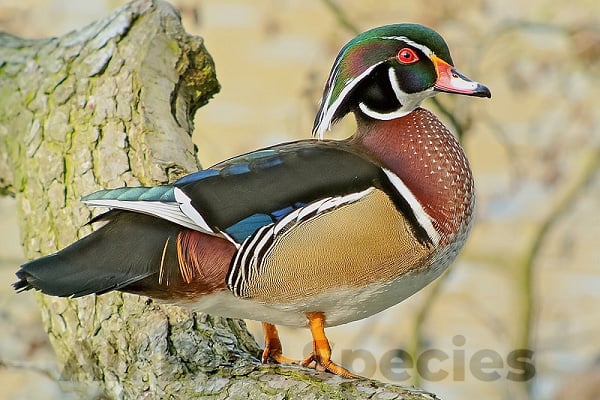
4. Mottled Duck
- Scientific name: Anas fulvigula
- Life span: 5-10 years
- Size: 48-56 cm
- Weight: 600-1,070 g
- Wingspan: 91-102 cm
- State status: Breeding and common
The Mottled Duck is new to Georgia but is becoming more common. It has a mottled brown look that helps it blend in. They are adapting well to city and country wetlands.

5. American Wigeon
- Scientific name: Mareca americana
- Life span: 12-15 years
- Size: 42-59 cm
- Weight: 600-1200 g
- Wingspan: 76-91 cm
Also known as the Baldpate, the American Wigeon has a bald head in males. They like to eat aquatic plants and are often seen in marshy areas during migration.
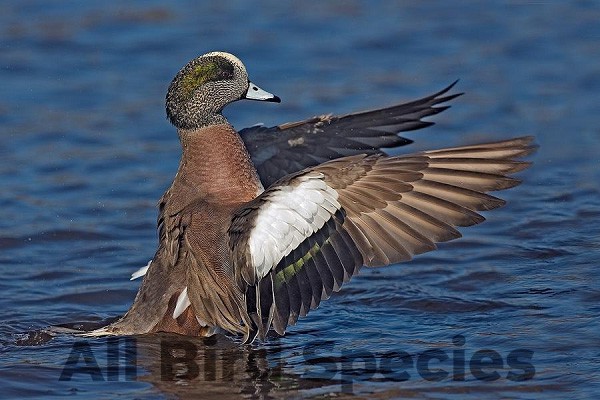
6. Gadwall
- Scientific name: Mareca strepera
- Life span: 5-10 years
- Size: 46-56 cm
- Weight: 800-1,350 g
- Wingspan: 81-95 cm
- State status: Migratory and uncommon
Gadwalls are often missed because they are not as colorful. But they have unique patterns and a calm nature. They prefer shallow waters for foraging.
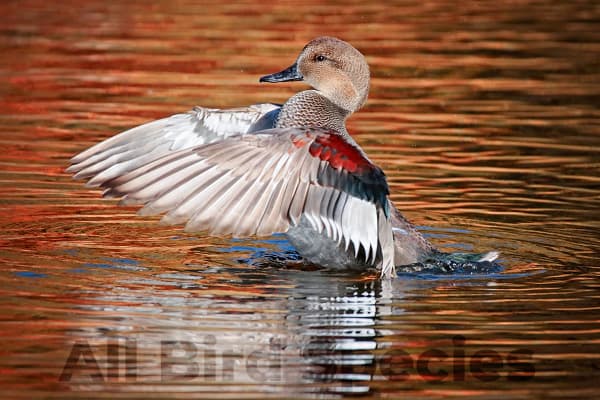
7. Northern Pintail
- Scientific name: Anas acuta
- Life span: 10-15 years
- Size: 56-66 cm
- Weight: 450-1150 g
- Wingspan: 80-95 cm
- Status: Least Concern
- State status: Migratory and uncommon
The Northern Pintail is known for its elegant flight and long neck. These ducks like open areas like marshes and swim gracefully on Georgia’s water bodies.

8. Northern Shoveler
- Scientific name: Spatula clypeata
- Life span: 10-15 years
- Size: 43-53 cm
- Weight: 400-1100 g
- Wingspan: 74-86 cm
- Status: Least Concern
- State status: Migratory and uncommon
Northern Shovelers are easy to spot with their broad, spoon-shaped bills. They use this bill to sift through the water while foraging, making them interesting to watch.
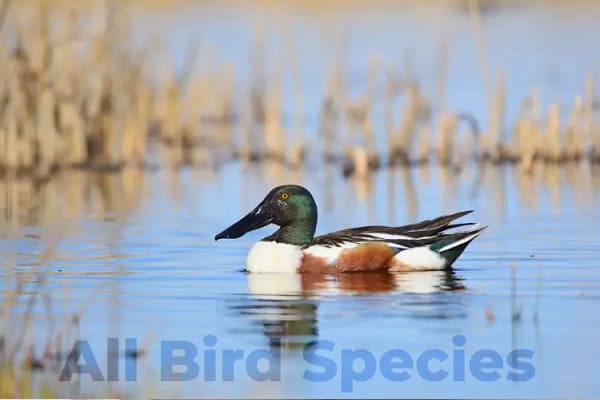
Related Articles:
9. Blue-winged Teal
- Scientific name: Spatula discors
- Life span: 5-10 years
- Size: 40-47 cm
- Weight: 280-420 g
- Wingspan: 58-63 cm
- Status: Least Concern
- State status: Migratory and uncommon
Blue-winged Teal are among the smallest dabbling ducks but are quite charming. They are known for their migratory patterns and can be seen flying in groups during these times.

10. Green-winged Teal
- Scientific name: Anas crecca
- Life span: 5-10 years
- Size: 33-38 cm
- Weight: 150-400 g
- Wingspan: 53-59 cm
- Status: Least Concern
- State status: Migratory and uncommon
Green-winged Teals are small but swift flyers. Despite their size, they do well in various wetland habitats. They are often seen skimming the water’s surface while looking for food.

| Duck Species | Distinct Features | Preferred Habitat |
|---|---|---|
| Mallard | Green head, yellow bill | Lakes, ponds |
| American Black Duck | Brown plumage, quacking sound | Freshwater areas |
| Wood Duck | Colorful plumage, perch on trees | Wooded swamps |
| Mottled Duck | Mottled brown feathers | Urban and rural wetlands |
| American Wigeon | The male has a bald head | Marshes |
| Gadwall | Subdued colors, patterned feathers | Shallow waters |
| Northern Pintail | Long neck, pointed tail | Marshes |
| Northern Shoveler | Broad spoon-shaped bill | Various water bodies |
| Blue-winged Teal | Small size, migratory habits | Wetlands |
| Green-winged Teal | Swift flying, small stature | Diverse wetland habitats |
Related Video:
11. Lesser Scaup
- Scientific name: Aythya affinis
- Life span: 12-15 years
- Size: 38-48 cm
- Weight: 400-1000 g
- Wingspan: 64-74 cm
- Status: Least Concern
- State status: Migratory and uncommon
The lesser scaup is a diving duck with unique looks. Males have a shiny greenish head and a white wing band. They are strong divers, going deep to find food. Spotting these ducks is easy with their size and colors.
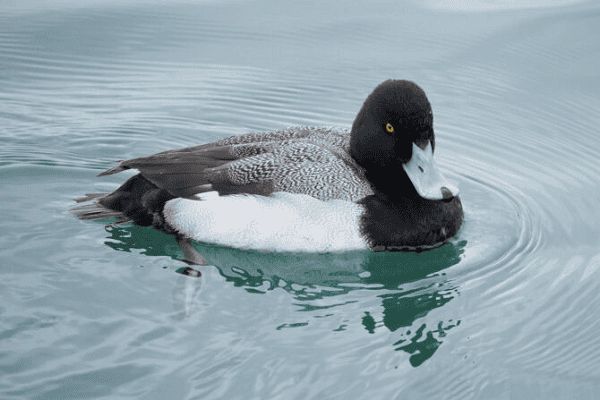
12. Canvasback
- Scientific name: Aythya valisineria
- Life span: 10-15 years
- Size: 48-56 cm
- Weight: 1,270-1,800 g
- Wingspan: 84-89 cm
- Status: Vulnerable
- State status: Migratory and uncommon
Canvasbacks are known for their elegant look. Males have bright red heads and a black chest. They eat aquatic plants and dive to get them. Watching them move in the water is beautiful.
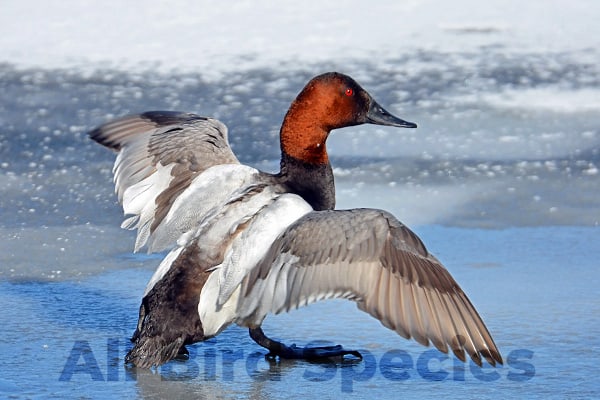
13. Redhead
- Scientific name: Aythya americana
- Life span: 10-15 years
- Size: 42-49 cm
- Weight: 850-1,600 g
- Wingspan: 76-84 cm
- Status: Least Concern
- State status: Migratory and uncommon
The redhead is known for its bright colors, especially in the breeding season. Males have a gray body with a red head. They migrate to Georgia for food and to breed. Spotting these ducks is easy with their bright colors and size.
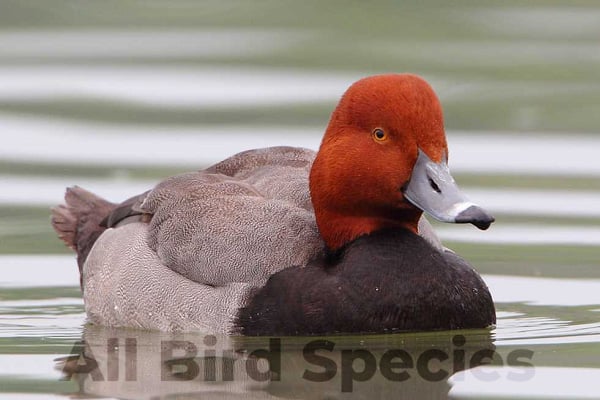
| Species | Appearance | Feeding Habits | Habitat |
|---|---|---|---|
| Lesser Scaup | Greenish-black head, white wing stripe | Aquatic plants, invertebrates | Freshwater lakes, ponds |
| Canvasback | Red head, black chest, sloping profile | Aquatic vegetation | Marshes, lakes |
| Redhead | Rounded red head, gray body | Vegetation, seeds | Shallow lakes, wetlands |
14. Long-tailed Duck
- Scientific name: Clangula hyemalis
- Life span: 6-12 years
- Size: 43-58 cm
- Weight: 430-1,160 g
- Wingspan: 61-84 cm
- Status: Least Concern
- State status: Migratory and rare
Long-tailed Ducks are found in the Arctic regions of North America and Eurasia, where they breed. In the winter, they move to coastlines and large inland lakes.
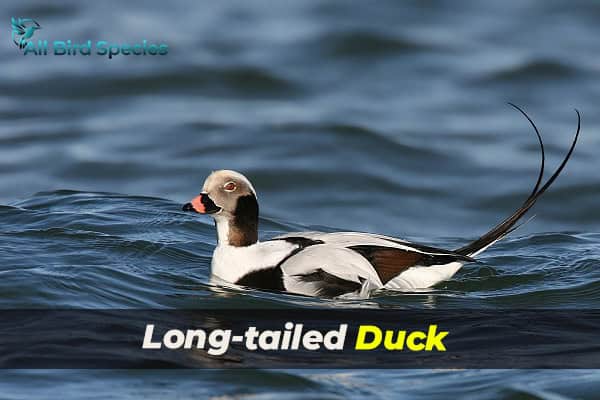
Males of this species are quite striking, with a long, elegant tail, a white body, and a gray head. On the other hand, females are more muted in color, appearing brown.
Long-tailed Ducks can dive really deep—up to 60 meters (200 feet) underwater—to find their food!
15. Surf Scoter
- Scientific name: Melanitta perspicillata
- Life span: 10-20 years
- Size: 45-54 cm
- Weight: 710-1,980 g
- Wingspan: 76-91 cm
- Status: Least Concern
- State status: Migratory and rare
Surf Scoters are sea ducks that live in North America. The males are easy to spot with their black bodies, white spots on their heads, and bright orange beaks. The females are brown and not as flashy. One cool thing about Surf Scoters is how they eat—they dive under the water for a moment and then pop right back up, which is called “bobbing.”

These ducks make their nests on the ground near water, often in places like coastal tundra or grassy areas. They like to build their nests close to where they find their food.
16. White-winged Scoter
- Scientific name: Melanitta fusca
- Life span: 10-15 years
- Size: 48-58 cm
- Weight: 900-2,800 g
- Wingspan: 81-97 cm
- Status: Least Concern
- State status: Migratory and uncommon
White-winged Scoters are sea ducks that live in North America and Eurasia. The males are black with noticeable white patches on their wings, while the females are dark brown. An interesting fact about these ducks is that they are strong and fast flyers, able to reach speeds of up to 80 km/h (50 mph) when they migrate.
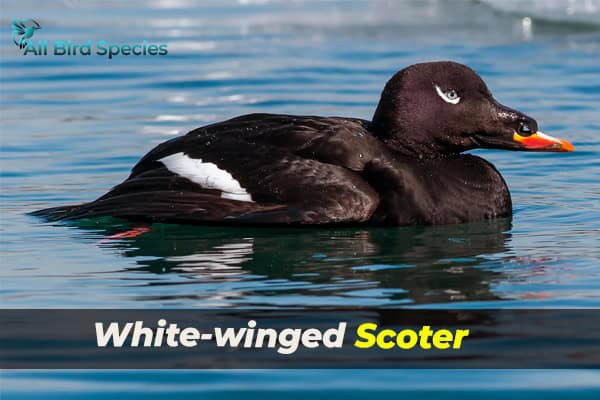
White-winged Scoters build their nests on the ground near water, usually hiding them among plants or rocks. They like to nest in coastal or nearshore areas.
Seasonal Ducks in Georgia
Georgia is home to a fascinating journey of ducks each year. As seasons change, different ducks come and go. This lets birdwatchers see amazing sights. Knowing when these ducks come helps us spot both common and rare ones.
Understanding Migratory Patterns
Every year, ducks migrate in Georgia, showing us wildlife’s strength. Many species travel long distances, stopping in our wetlands. These places are key for rest, food, and breeding. By watching their paths, we can guess which ducks we might see, making our birdwatching better.
Rarity and Migration Insights
We always look for rare ducks to make birdwatching exciting. Not all ducks follow the same path. Some ducks visit less often, making each trip a surprise.
| Season | Species | Common Sightings | Rare Sightings |
|---|---|---|---|
| Winter | Wood Duck | Common | Harlequin Duck |
| Spring | Mallard | Common | Summer Duck |
| Summer | Northern Pintail | Less Common | Scaup |
| Fall | American Black Duck | Common | King Eider |
Conservation of Ducks in Georgia
Protecting ducks in Georgia is key to keeping our ecosystems healthy. Wetlands are crucial for ducks, offering places to nest, eat, and hide from dangers. Keeping these areas safe helps ducks and supports Georgia’s rich natural life.
The Importance of Wetland Habitats
Wetlands are vital for ducks’ survival. They are full of plants and animals that help ducks during breeding and migration. By protecting wetlands, we keep waterfowl populations strong for the future.
Conservation Efforts and Community Involvement
Groups and communities in Georgia work hard to save ducks. They do things like restore habitats and teach people about conservation. We can join these efforts by supporting sustainable actions and spreading the word about wetland protection. Together, we can help ducks flourish in their natural homes.
Activities to Enjoy Ducks in Georgia
Georgia is a great place for outdoor activities, especially for those who love ducks. Birdwatching in Georgia lets us connect with nature and see many different duck species. Here are some tips to make the most of your time outdoors.
Birdwatching Tips for Enthusiasts
Here are some tips to improve your birdwatching:
- Look for places like wetlands, lakes, and parks where ducks live.
- Go out early in the morning or late in the afternoon when ducks are active.
- Bring binoculars and a field guide to help identify the birds.
- Keep quiet and patient so ducks feel safe around you.
- Keep a journal to record what you see and where you see it.
Photographing Ducks: Best Practices
Photographing ducks can be fun and rewarding. Here are some tips for great photos:
- Use a telephoto lens to get close-up shots without scaring the ducks.
- Look for natural light, like during the golden hour, for beautiful photos.
- Watch how the ducks behave and make sure you don’t disturb them.
- Try different angles and views for unique photos of ducks in their homes.
- Focus on the ducks that you find interesting and enjoy your photography.
Check our Previous Articles:
Final Thoughts
Our journey through Georgia’s 24 types of ducks has shown us the state’s rich bird life. We’ve learned about their types when they’re around, and how we’re helping protect them. Birdwatching and taking photos of ducks make our connection with nature stronger.
Thinking about our birdwatching experiences, we see how important we are. By caring more about ducks, we enjoy their beauty and help save them. Protecting their homes means future generations can also enjoy wildlife like we do.

